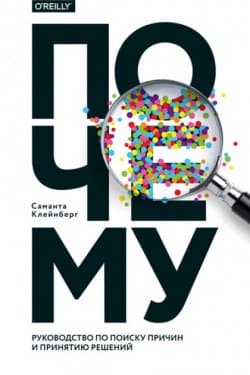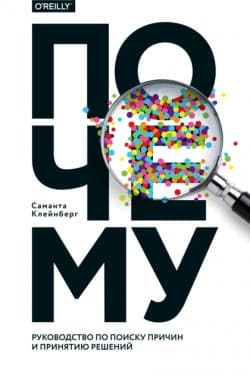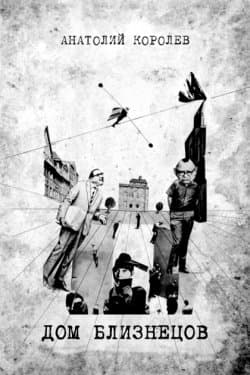Почему - Саманта Клейнберг (2017)
-
Год:2017
-
Название:Почему
-
Автор:
-
Жанр:
-
Язык:Русский
-
Страниц:161
-
Рейтинг:
-
Ваша оценка:
Почему - Саманта Клейнберг читать онлайн бесплатно полную версию книги
Perotte, A. and Hripcsak, G. (2013). Temporal Properties of Diagnosis Code Time Series in Aggregate. IEEE Journal of Biomedical and Health Informatics, 17(2): 477–483.
Perwien, A. R., Johnson, S. B., Dymtrow, D., and Silverstein, J. (2000). Blood Glucose Monitoring Skills in Children with Type I Diabetes. Clinical Pediatrics, 39(6): 351–357.
Phillips, C. V. and Goodman, K. J. (2004). The missed lessons of Sir Austin Bradford Hill. Epidemiologic Perspectives & Innovations, 1(1): 3.
Pivovarov, R. and Elhadad, N. (2012). A hybrid knowledge-based and data-driven approach to identifying semantically similar concepts. Journal of Biomedical Informatics, 45(3): 471–481.
Power, D. J. (2002). Ask Dan! What is the “true story” about data mining, beer and diapers? DSS News, 3(23).
Price, D. D., Finniss, D. G., and Benedetti, F. (2008). A Comprehensive Review of the Placebo Effect: Recent Advances and Current Thought. Annual Review of Psychology, 59: 565–590.
Price, H. (1997). Time’s Arrow and Archimedes’ Point: New Directions for the Physics of Time. Oxford University Press, Oxford.
Prinz, F., Schlange, T., and Asadullah, K. (2011). Believe it or not: How much can we rely on published data on potential drug targets? Nature Reviews Drug Discovery, 10(9): 712–713.
Pritchard, C. (2012). Does chocolate make you clever? BBC News. Retrieved from
Pronin, E., Wegner, D. M., McCarthy, K., and Rodriguez, S. (2006). Everyday Magical Powers: The Role of Apparent Mental Causation in the Overestimation of Personal Influence. Journal of Personality and Social Psychology, 91(2): 218–231.
Psillos, S. (2010). Causal Pluralism. In R. Vanderbeeken and B. D’Hooghe (eds.), World-views, Science and Us: Studies of Analytical Metaphysics, pp. 131–151. World Scientific Publishers, Singapore.
R v. Jordan (1956). 4 °Cr App R. 152.
Radelet, M. L. and Pierce, G. L. (1991). Choosing Those Who Will Die: Race and the Death Penalty in Florida. Florida Law Review, 43(1): 1–34.
Redelmeier, D. A. and Tversky, A. (1996). On the belief that arthritis pain is related to the weather. Proceedings of the National Academy of Sciences, 93(7): 2895–2896.
Reichenbach, H. (1956). The Direction of Time. University of California Press, Berkeley. Reprint, Dover Publications, 2000.
Reiss, J. (2007). Time Series, Nonsense Correlations and the Principle of the Common Cause. In F. Russo and J. Williamson (eds.), Causality and Probability in the Sciences, pp. 179–196. College Publications, London.
Reiss, J. (2014). What’s Wrong With Our Theories of Evidence? Theoria, 29(2): 283–306.
Rescorla, R. A. and Wagner, A. R. (1972). A theory of Pavlovian conditioning: Variations in the effectiveness of reinforcement and nonreinforcement. In A. H. Black and W. F. Prokasy (eds.), Classical Conditioning II: Current Theory and Research, pp. 64–99. Appleton-Century-Crofts, New York.
Rhonheimer, J. (writer) and Fryman, P. (director). (2007). Lucky penny [Television series episode]. In Bays, C. and Thomas, C. (producers), How I met your mother. CBS, Los Angeles.
Ridker, P. M. and Cook, N. R. (2013). Statins: New American guidelines for prevention of cardiovascular disease. The Lancet, 382(9907): 1762–1765.
Robins, J. M., Rotnitzky, A., and Scharfstein, D. O. (2000). Sensitivity Analysis for Selection bias and unmeasured Confounding in missing Data and Causal inference models. In M. E. Halloran and D. Berry (eds.), Statistical Models in Epidemiology: The Environment and Clinical Trials, pp. 1–94. Springer-Verlag, New York.
Robinson, J. W. and Hartemink, A. J. (2010). Learning Non-Stationary Dynamic Bayesian Networks. Journal of Machine Learning Research, 11(Dec): 3647–3680.

 Без невроза
Без невроза  Осколки времени
Осколки времени  Свет между нами
Свет между нами  Смотреть и видеть
Смотреть и видеть  Почему. Руководство по поиску причин и принятию решений
Почему. Руководство по поиску причин и принятию решений  Пир теней
Пир теней  Князь во все времена
Князь во все времена  Когда порвется нить
Когда порвется нить  Пока я здесь
Пока я здесь 



















